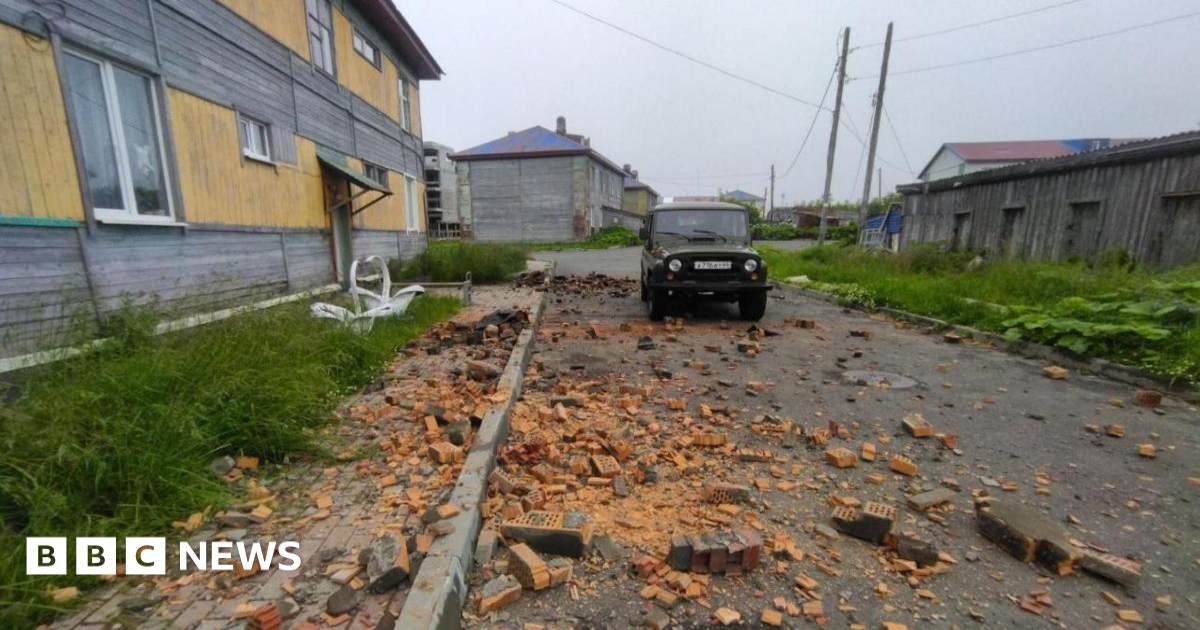This sudden movement can displace water above the plates, which can then travel to the coastline as tsunami.
In the deep ocean, tsunami can travel at more than 500mph (800km/h), about as fast as a passenger aeroplane.
Here, the distance between waves is very long and the waves aren’t very high – rarely more than a metre.
But as a tsunami enters shallow water near land, it slows down, often to about 20-30mph.
The distance between waves shortens, and waves grow in height, which can effectively create a wall of water near the coast.
But it’s by no means guaranteed that a very strong earthquake will lead to a particularly tall tsunami reaching far inland.
Today’s quake brought tsunami waves of 4m (13ft) in parts of eastern Russia, according to authorities there.
But they don’t come close to the waves tens-of-metres high of Boxing Day 2004 in the Indian Ocean and Japan 2011.
“The height of the tsunami wave is also affected by local shapes of the seafloor near the coast and the [shape] of the land where it arrives,” said Prof Lisa McNeill, professor of tectonics at the University of Southampton.
“These factors, along with how populated the coast is, affect how serious the impact is,” she added.
Initial reports from the US Geological Survey said that the earthquake was centred at quite a narrow depth, about 20.7km (12.9 miles) below the Earth’s surface.
That can lead to greater displacement of the seafloor, and therefore a bigger tsunami wave, but it’s hard to tell for sure so soon after the event.
“One possibility is that the tsunami models have maybe taken a conservative estimate on the earthquake depth,” Dr Hicks told BBC News.
“Potentially you could shift that earthquake another 20 kilometres deeper, and that would actually reduce the amplitude of the tsunami waves quite considerably.”
